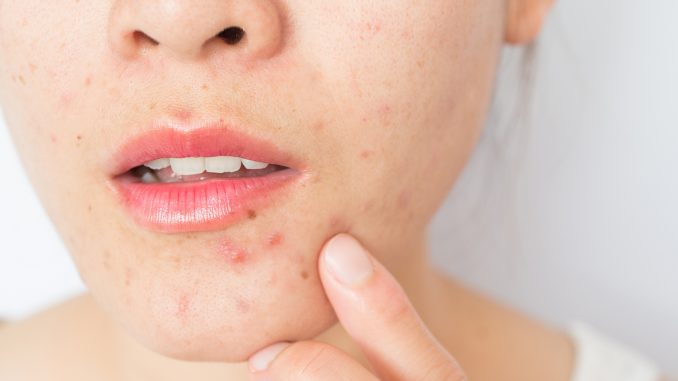
Under the skin pimples, also known as cystic acne, can be painful, frustrating, and challenging to manage. These deep-seated pimples occur when a pore becomes clogged with oil and dead skin cells, leading to inflammation and the formation of a painful bump beneath the surface of the skin. While it’s tempting to pop or squeeze these pimples, doing so can worsen the condition and potentially damage your skin. In this article, we’ll discuss effective and safe ways to remove under the skin pimples without causing harm to your skin.
1. Leave Them Alone
The first and most crucial step in dealing with under the skin pimples is to resist the urge to pop or squeeze them. Squeezing can push bacteria deeper into the skin, exacerbating inflammation, and increasing the risk of infection and scarring.
2. Warm Compress
Applying a warm compress can help reduce pain and inflammation associated with under the skin pimples. Here’s how to do it:
- Soak a clean washcloth in warm water (not hot) and wring out excess moisture.
- Gently press the warm compress onto the pimple for 10-15 minutes.
- Repeat this process a few times a day until the pimple comes to a head or decreases in size.
The heat encourages blood circulation, which can help speed up the healing process.
3. Topical Treatments
Several over-the-counter (OTC) topical treatments can help reduce the size and inflammation of under the skin pimples. Look for products containing ingredients like benzoyl peroxide, salicylic acid, or sulfur. Apply a thin layer of the treatment directly to the pimple according to the product’s instructions.
4. Tea Tree Oil
Tea tree oil is a natural antiseptic and anti-inflammatory agent that can help reduce the size of under the skin pimples and prevent infection. Dilute tea tree oil with a carrier oil (like jojoba or coconut oil) and apply it to the pimple with a cotton swab. Leave it on for a few hours or overnight.
5. Avoid Harsh Scrubs
Avoid using harsh physical scrubs or abrasive exfoliants on under the skin pimples, as they can irritate the area and worsen inflammation. Gentle exfoliation with a mild chemical exfoliant like salicylic acid can be more effective and less damaging.
6. Clay Masks
Clay masks, particularly those containing kaolin or bentonite clay, can help draw out impurities from beneath the skin’s surface. Apply the mask to the affected area, allow it to dry, and then rinse it off. Use clay masks sparingly to avoid over-drying the skin.
7. Ice Pack
An ice pack can help reduce inflammation and numb the area, providing relief from pain and swelling. Wrap an ice pack in a clean cloth and apply it to the pimple for a few minutes at a time.
8. Non-Prescription Anti-Inflammatory Medications
Over-the-counter non-steroidal anti-inflammatory drugs (NSAIDs) like ibuprofen can help reduce pain and inflammation associated with under the skin pimples. Follow the recommended dosage on the product label.
9. Keep the Area Clean
Maintain good skincare hygiene by gently cleansing the affected area with a mild, non-comedogenic cleanser twice a day. Avoid using harsh or drying cleansers, as they can irritate the skin.
10. Patience Is Key
Under the skin pimples can take time to heal, sometimes several weeks. It’s essential to be patient and consistent with your chosen treatments while resisting the urge to pick or squeeze.
When to Seek Professional Help
If under the skin pimples persist, become increasingly painful, or show signs of infection, it’s essential to seek professional help. A dermatologist can provide guidance and may recommend treatments like corticosteroid injections or prescription medications to manage severe cases of cystic acne.
Conclusion
Dealing with under the skin pimples can be frustrating, but it’s crucial to approach them with care and patience. Avoid aggressive squeezing or picking, as it can lead to scarring and further inflammation. Instead, opt for gentle treatments, warm compresses, and over-the-counter products to help manage these deep-seated pimples effectively. If your condition does not improve or worsens, consult a dermatologist for professional guidance and treatment options. Remember that good skincare practices, consistency, and patience are essential in managing and preventing under the skin pimples.
Share this:
- Click to share on Facebook (Opens in new window)
- Click to share on Twitter (Opens in new window)
- Click to share on WhatsApp (Opens in new window)
- Click to share on Reddit (Opens in new window)
- Click to share on Telegram (Opens in new window)
- Click to share on Pinterest (Opens in new window)
- Click to share on LinkedIn (Opens in new window)